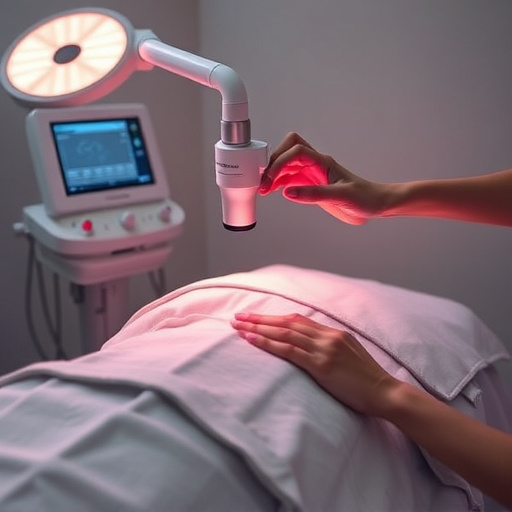Personalized treatment plans are key for optimal post-procedure recovery in healthcare, as each patient's body reacts uniquely. Skilled professionals craft these plans based on lifestyle, medical history, and aesthetic goals, focusing on immediate care, ongoing maintenance, and rejuvenation strategies. A successful plan involves a detailed assessment, targeted treatments like facial therapies or microneedling, educational resources, and at-home care instructions. Implementing these tailored regimens for procedures like laser hair removal or skin rejuvenation ensures effective recovery outcomes, enhances patient satisfaction, and fosters long-term loyalty.
Personalized treatment plans are transforming post-procedure recovery, ensuring individuals receive tailored care that accelerates healing and enhances overall well-being. This article delves into the significance of individualized medical aftercare, exploring how personalized treatment plans address unique patient needs. We examine the key components that constitute effective strategies and provide healthcare professionals with practical strategies for implementation and tracking success, emphasizing the power of customized recovery paths in modern medicine.
- Understanding Personalized Treatment Plans: The Importance of Individualized Care After Medical Procedures
- Components of an Effective Personalized Post-Procedure Recovery Plan
- Implementing and Tracking Personalized Treatment: Strategies for Healthcare Professionals
Understanding Personalized Treatment Plans: The Importance of Individualized Care After Medical Procedures

Personalized treatment plans are essential for optimal post-procedure recovery. Every patient’s body reacts differently to medical interventions, and their specific needs vary greatly. Therefore, a one-size-fits-all approach is rarely effective in ensuring the best possible outcomes. Skilled healthcare professionals recognize the value of individualized care, tailoring treatment regimens to suit each patient’s unique circumstances.
This personalized touch extends beyond immediate post-operative care into ongoing maintenance and skin rejuvenation strategies. For instance, facial treatments and skin tightening procedures may be recommended for specific concerns like fine lines or sagging skin. However, a successful long-term solution requires a customized plan that considers the patient’s lifestyle, medical history, and aesthetic goals, ensuring both short-term recovery and lasting results.
Components of an Effective Personalized Post-Procedure Recovery Plan

A successful personalized treatment plan for post-procedure recovery is multifaceted and tailored to each individual’s unique needs. It begins with a comprehensive assessment that considers medical history, current skin condition, and specific concerns. This initial evaluation allows professionals to design a strategy that encompasses various components essential for optimal healing.
The plan should include targeted treatments like facial treatments or microneedling therapy, chosen based on the patient’s skin health goals. These therapies are administered with precision, aiming to stimulate collagen production, enhance skin texture, and promote faster recovery. Additionally, educational resources and at-home care instructions are vital components, empowering patients to actively participate in their post-procedure journey and ensuring consistent skin health improvement.
Implementing and Tracking Personalized Treatment: Strategies for Healthcare Professionals

Implementing and tracking personalized treatment plans is a strategic approach that empowers healthcare professionals to deliver tailored post-procedure care. This strategy involves assessing each patient’s unique needs, medical history, and goals following procedures like laser hair removal or skin rejuvenation treatments. By integrating professional skincare protocols, practitioners can create comprehensive recovery regimens. These regimens may include specific product recommendations, application techniques, and timeframes for optimal healing.
To ensure effectiveness, continuous tracking is vital. Healthcare providers can utilize digital tools to monitor patient progress, capture feedback, and adjust treatment plans accordingly. Regular communication with patients about their experiences and observations fosters a collaborative environment, allowing professionals to refine their personalized strategies over time. This dynamic approach optimizes recovery outcomes, enhancing patient satisfaction and fostering long-term loyalty in the post-procedure journey.
Personalized treatment plans are no longer a luxury but a necessity in modern healthcare. By tailoring recovery strategies to individual patients, we enhance post-procedure outcomes and ensure a smoother transition back to good health. Implementing these plans requires a multidisciplinary approach, leveraging advanced technology for tracking progress, and fostering open communication between patients and providers. Embracing personalized care not only improves patient satisfaction but also contributes to long-term wellness, making it a game-changer in healthcare delivery.














